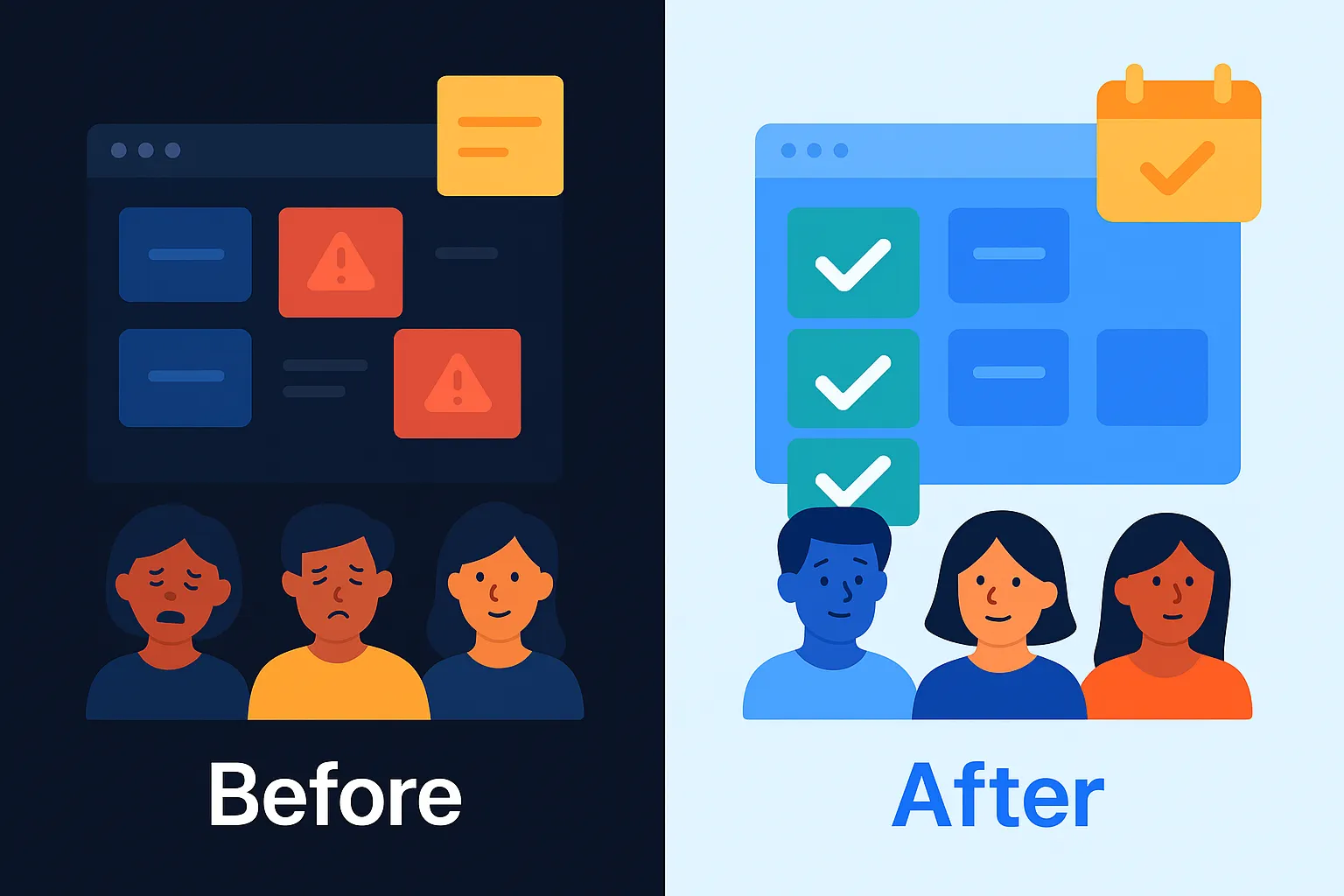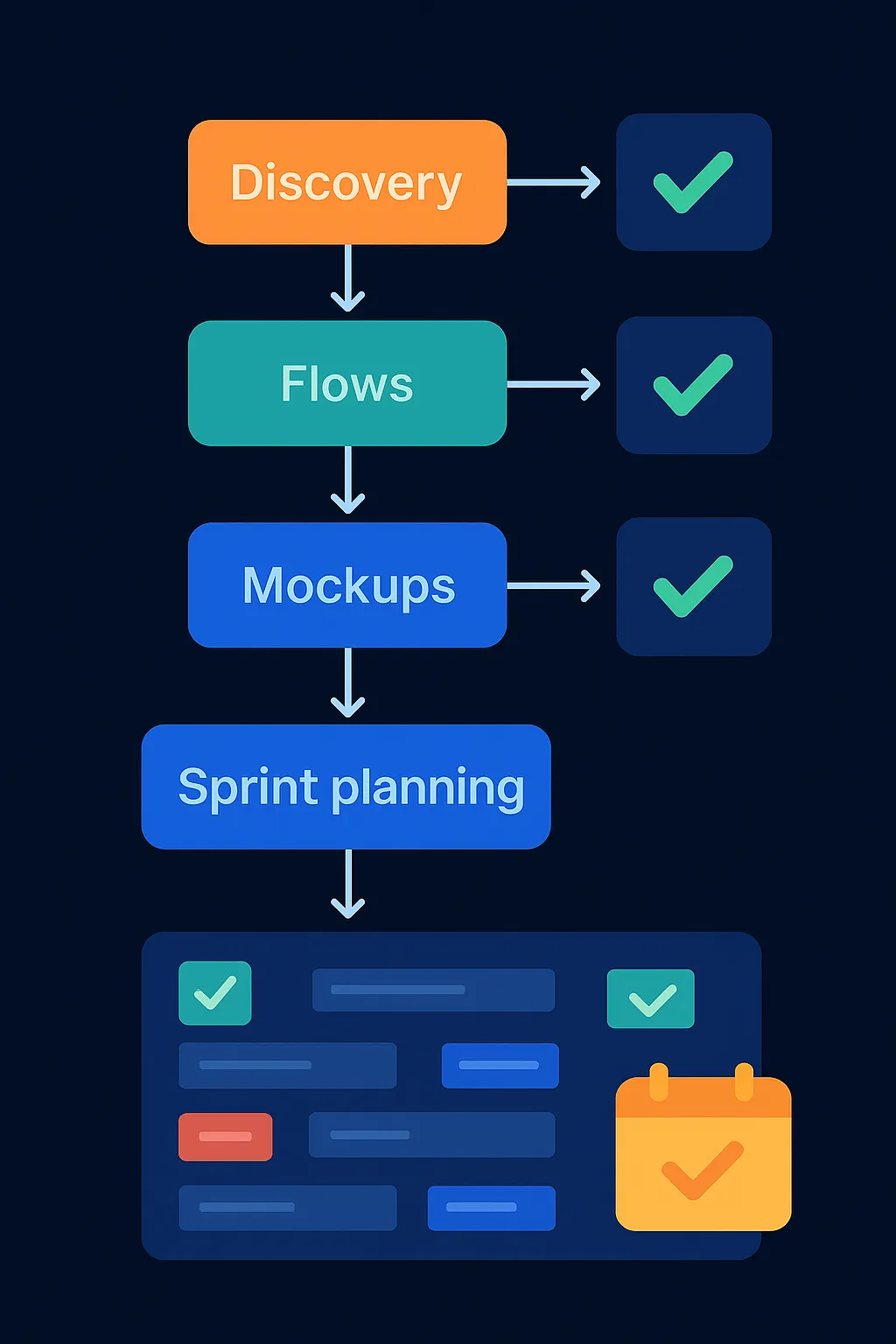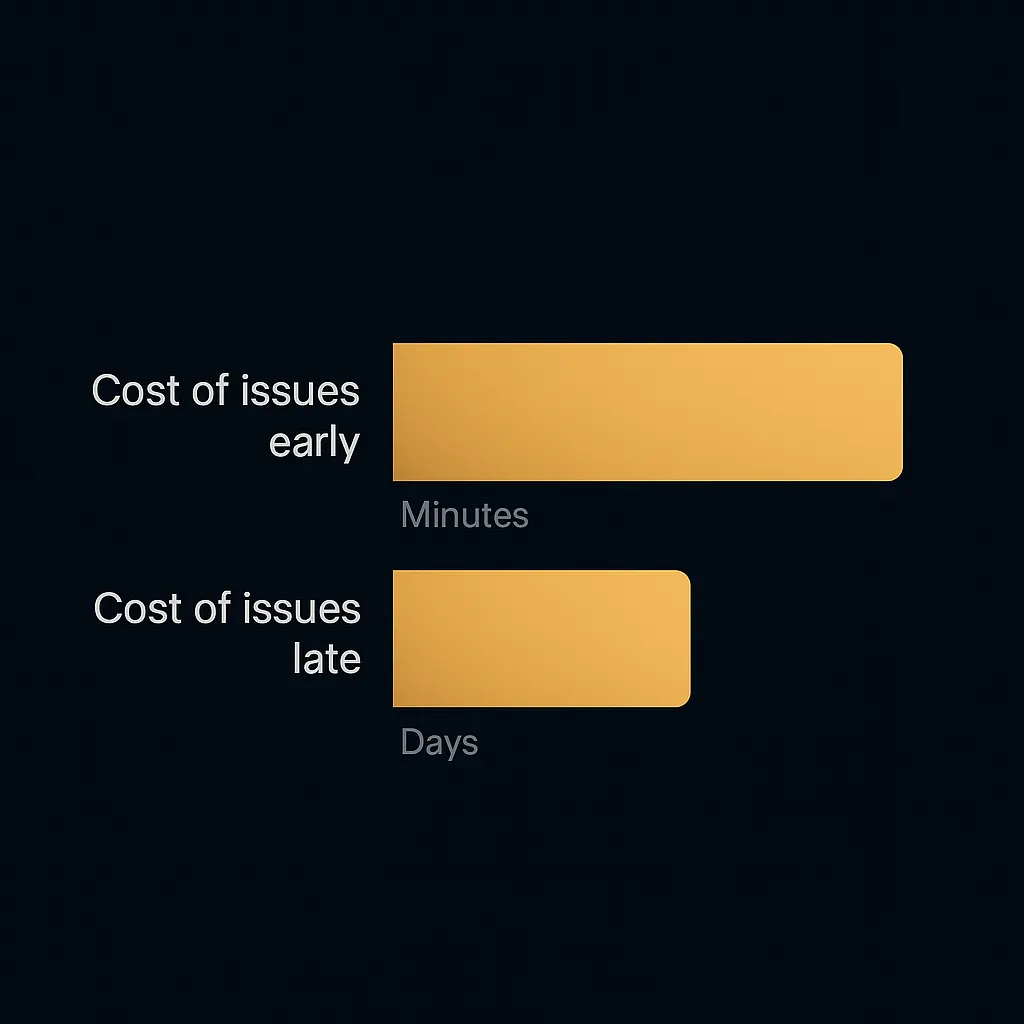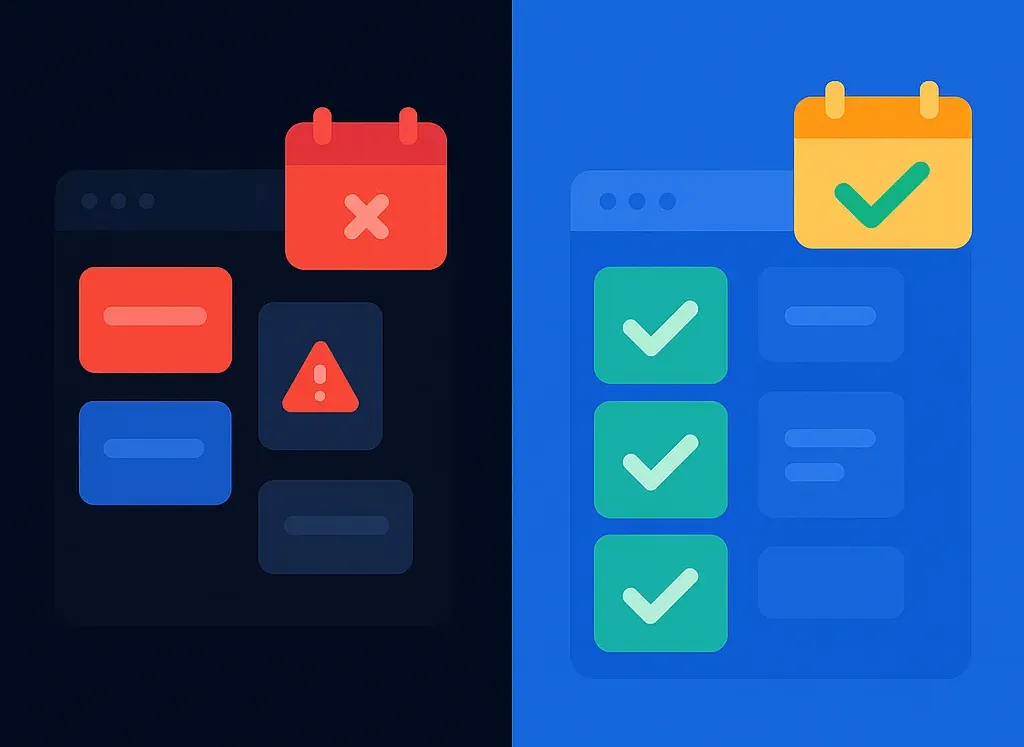Introduction
Every launch team knows the ritual. A big campaign approaches, polished mockups are in Figma, timelines are aggressive but doable, and optimism runs high. On Tuesday, the team is confident:
“We’ll ship on Friday.”
But by Thursday, cracks appear. QA finally joins, defects flood the board, and the timeline buckles. Suddenly engineers are patching until midnight, marketers are rewriting campaign emails, and leadership is calculating the cost of delay.
This is the “Before.”
The “After” looks radically different. QA is no longer a gatekeeper at the end—it’s a partner from the first sketch. Issues surface while they’re still cheap. Campaigns launch on time. And instead of a frantic finish, teams get something rare in this industry: a boring release day.

Before: Fire Drills at the Finish Line
In the common model, QA is an afterthought. The sprint nears its close, a tester files a batch of bugs, and everyone scrambles. None of the issues are dramatic alone, but each lands at the worst possible moment:
- A hero video fails in Firefox after a silent browser update.
- Safari shifts how sticky headers behave, covering critical CTAs.
- A geo-redirect strips campaign UTMs, erasing attribution data.
- A 6MB hero image kills mobile load speed, wasting ad spend.
Each of these could be solved in minutes during design. But at the eleventh hour, they’re expensive: reassigning developers, delaying campaigns, burning through ad budgets.
We’ve seen one-week delays on $50K media spends erase the ROI of an entire launch before the site even goes live.

After: QA Built Into Design
The shift isn’t adding ceremony—it’s moving the same questions earlier. QA joins from the first sketch, quietly asking:
- Which browsers and devices must we support?
- What’s the mobile performance budget?
- How will analytics define success?
In flow mapping, QA traces “unhappy paths”: timeouts, blocked CTAs, empty CMS slots. Drawn into diagrams early, these aren’t edge cases anymore—they’re part of the intended experience.
In mockups, QA flags details in context: focus order for validation, fallback images for video, consistent event names for GA4 and Mixpanel. Most fixes take minutes in Figma instead of days in code.
By sprint planning, acceptance criteria already live next to designs. Engineers know what to build, marketers know what will be tracked, and surprises vanish.

The Economics of After
Early QA is often framed as “extra effort.” But the economics flip the narrative.
In one quarter, early QA comments cut reopened design tickets by ~35%. After just two QA-attended wireframe sessions, one team cut design rework hours by more than half. Campaigns stopped slipping their ad and PR slots.
The financial upside is obvious:
- Keeping a $50K ad buy on schedule.
- Preserving reach by hitting a crowded news cycle on time.
- Protecting ROI models by ensuring every CTA is tracked.
Think of QA like interest rates. Every day a defect survives, its cost compounds. Catch it in Figma—it’s a minute. Catch it in code—it’s a day. Catch it after launch—it’s a week and a bruised brand.

The Human Side
The dollar math is compelling, but the human math is just as powerful.
Last-minute fire drills corrode morale. Designers hate redrawing the same components. Engineers lose flow to emergency fixes. Marketers juggle campaign delays, explaining to leadership why the slot was missed.
With Integrated QA, the texture of work changes:
- Teams move at a steady pace, not in panicked bursts.
- Retrospectives turn from blame sessions into calm reviews.
- Releases feel routine, not like rescues.
As one designer put it: “I stopped dreading QA feedback. It shifted from pointing out mistakes to helping me design them out in the first place.”

Before / After in One Snapshot
- Before: QA arrives at the end, issues surface late, campaigns slip, weekends are lost.
- After: QA joins at the start, issues are resolved early, launches are predictable, weekends are free.
It’s not about doing more—it’s about doing the same work at the right time. Quiet, consistent, and compounding.

Conclusion
The difference between Before and After isn’t dramatic ceremony. It’s the quiet shift of moving QA upstream. Small questions asked early prevent big problems later.
Campaigns launch on time. Budgets stay intact. Teams rediscover the rare luxury of a launch night that feels uneventful.
Integrated QA doesn’t shout—it just keeps delivery steady. And in the high-stakes world of marketing launches, that steady rhythm is the real competitive advantage.
Oct 1, 2025
